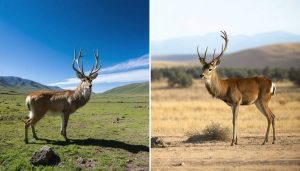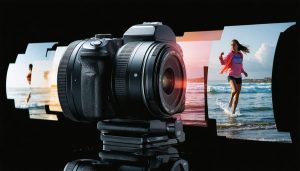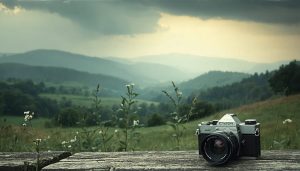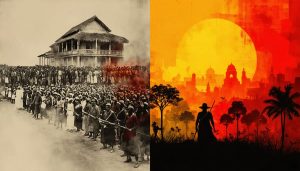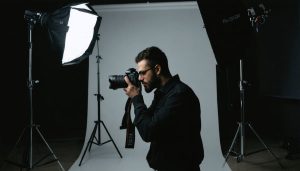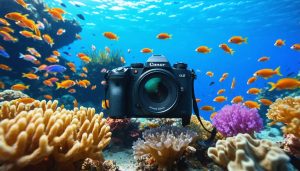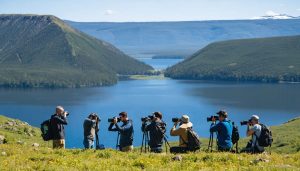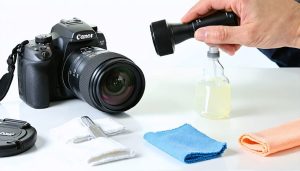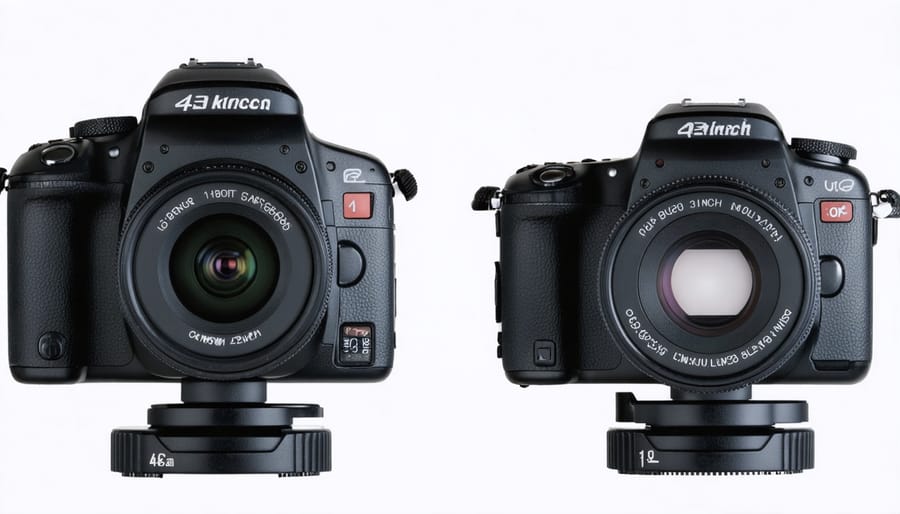
The battle between 4/3 and 1-inch camera sensor sizes fundamentally shapes your photography’s look, capability, and creative potential. Understanding this crucial difference unlocks your ability to choose the right camera system for your needs. While 4/3 sensors capture approximately 70% more light than their 1-inch counterparts, delivering superior low-light performance and smoother tonal transitions, they also demand larger, heavier lenses and typically command higher prices. This size difference translates into real-world implications: 4/3 sensors excel in professional event photography and serious portraiture, while 1-inch sensors strike an impressive balance between image quality and portability for travel and street photography. As camera technology continues to evolve, this sensor size choice remains one of the most significant decisions affecting both your creative expression and practical shooting experience.
Understanding Sensor Sizes: The Basic Facts
The Real Size Difference
When it comes to the actual dimensions, the difference between 4/3 and 1-inch sensors is quite significant in the world of sensor size comparison. A 4/3 sensor measures approximately 17.3 x 13mm, offering a surface area of around 225 square millimeters. In contrast, a 1-inch sensor measures 13.2 x 8.8mm, with a surface area of about 116 square millimeters.
To put this in perspective, a 4/3 sensor is roughly 94% larger than a 1-inch sensor. Imagine two rectangles side by side – the 4/3 sensor would be noticeably bigger, almost double the size. This size difference becomes particularly apparent when you consider the sensor’s diagonal measurement: 21.6mm for the 4/3 sensor versus 15.9mm for the 1-inch sensor.
Despite its name, a 1-inch sensor isn’t actually one inch in any dimension – it’s a historical term dating back to video camera tubes. The 4/3 designation, while also not directly related to its physical dimensions, more accurately reflects its proportions with a 4:3 aspect ratio.
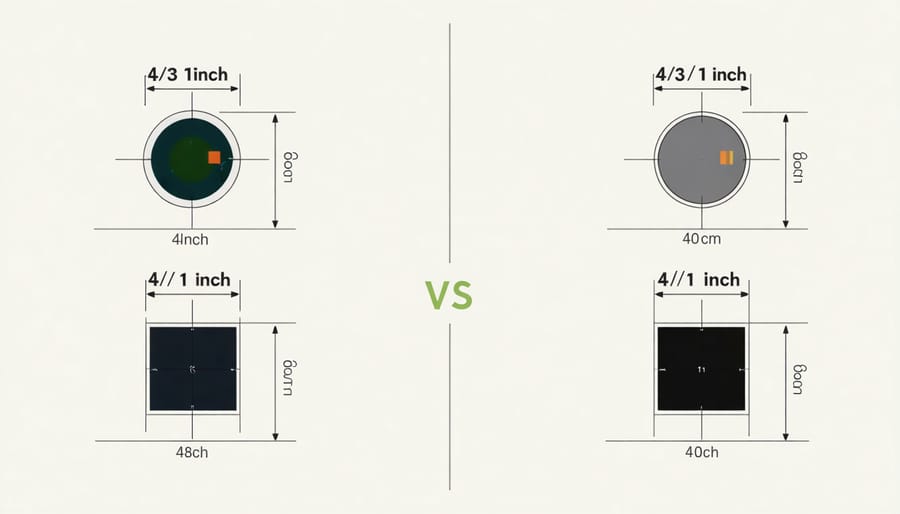
Common Cameras Using These Sensors
The Four Thirds sensor size is prominently featured in many Olympus and Panasonic Micro Four Thirds cameras. Popular models include the Olympus OM-D E-M1 Mark III, OM-D E-M5 Mark III, and the Panasonic Lumix GH5 and GH6 series. These cameras are particularly favored by videographers and travel photographers for their compact size and versatile features.
On the 1-inch sensor front, Sony’s RX100 series has long been the standard-bearer, with models from Mark I through Mark VII showcasing the capabilities of this sensor size. The Sony RX10 series of bridge cameras also utilizes the same sensor size. Other notable cameras include the Panasonic Lumix ZS200/TZ200, which combines the 1-inch sensor with a versatile zoom range, and the Canon PowerShot G7 X Mark III, popular among vloggers and content creators.
Recently, drone manufacturers like DJI have also embraced the 1-inch sensor, incorporating it into models like the Air 2S and Mavic 3, offering improved image quality for aerial photography.
Image Quality Comparison
Low Light Performance
When it comes to low-light photography, sensor size plays a crucial role in the impact on image quality, particularly in challenging lighting conditions. The Four Thirds sensor, being larger than the 1-inch sensor, generally offers better high ISO performance and noise handling capabilities.
In practical terms, a Four Thirds sensor typically provides about one stop of advantage in noise performance compared to a 1-inch sensor. This means you can shoot at ISO 3200 on a Four Thirds sensor with similar noise levels to what you’d see at ISO 1600 on a 1-inch sensor. This advantage becomes particularly noticeable when photographing indoor events, concerts, or twilight scenes.
However, modern image processing has somewhat narrowed this gap. Many current 1-inch sensors incorporate advanced noise reduction algorithms that help maintain image quality at higher ISOs. While they may not match the Four Thirds sensor’s performance, they can still produce very usable images up to ISO 3200-6400, depending on your tolerance for noise.
For real-world shooting, this means Four Thirds users can more confidently push their ISO settings in demanding situations, while 1-inch sensor users might need to rely more on faster lenses or image stabilization to achieve similar results in low light.
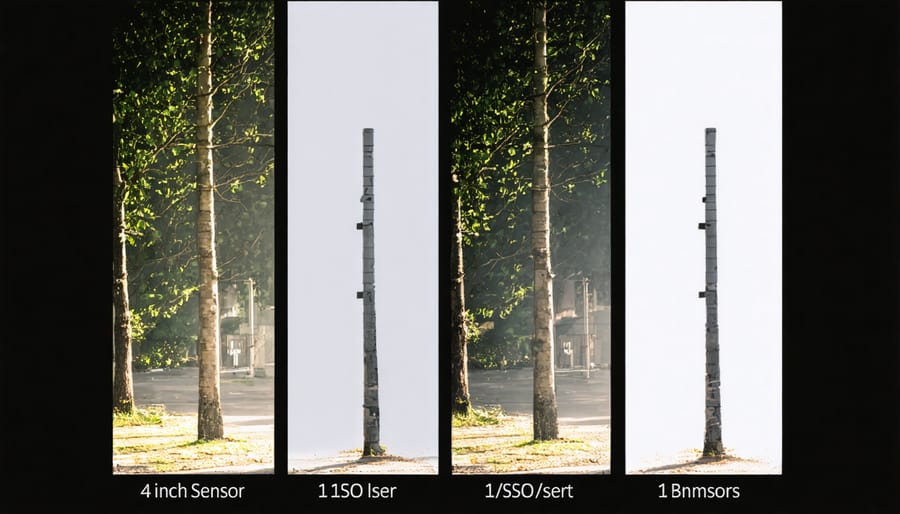
Dynamic Range
When it comes to dynamic range, the larger 4/3 sensor typically outperforms its 1-inch counterpart, offering photographers more flexibility in challenging lighting conditions. The bigger photosites on 4/3 sensors can capture a wider range of light intensities, resulting in better highlight retention and shadow detail recovery during post-processing.
In real-world shooting scenarios, this advantage becomes particularly evident when photographing high-contrast scenes, such as landscapes during golden hour or indoor venues with bright windows. 4/3 sensors generally provide about 1-1.5 stops more dynamic range than 1-inch sensors, allowing you to pull more detail from both the brightest and darkest areas of your images.
For instance, when shooting a backlit portrait, a 4/3 sensor camera will typically retain more detail in both the subject’s shadowed face and the bright background. This translates to greater creative freedom during editing, as you’ll have more latitude to adjust exposure without introducing noise in the shadows or losing detail in the highlights.
However, it’s worth noting that modern image processing has somewhat narrowed this gap. The latest 1-inch sensors, combined with advanced processing algorithms, can still deliver impressive dynamic range performance that satisfies most shooting scenarios. The difference becomes most noticeable in extreme lighting situations or when pushing image files significantly during post-processing.
Depth of Field Control
When it comes to depth of field control and background blur, both Four Thirds and 1-inch sensors offer distinct capabilities, though they behave quite differently. Four Thirds sensors, being larger, naturally provide more potential for background separation and creamy bokeh effects compared to 1-inch sensors.
To put this in perspective, a 25mm f/1.4 lens on a Four Thirds sensor will create noticeably more background blur than a similar focal length at the same aperture on a 1-inch sensor. This makes Four Thirds sensors particularly appealing for portrait photographers and those who frequently shoot in conditions where subject isolation is desired.
However, it’s worth noting that modern 1-inch sensors can still produce pleasing background blur, especially when using longer focal lengths and shooting at wider apertures. While the effect won’t be as pronounced as with Four Thirds sensors, many photographers find the bokeh capability of 1-inch sensors perfectly adequate for everyday photography.
The trade-off works in favor of 1-inch sensors when greater depth of field is needed. Street photographers and landscape enthusiasts might appreciate the naturally deeper depth of field, which makes it easier to keep more elements in focus without requiring extremely small apertures that could compromise image quality through diffraction.
Remember that creative composition and subject distance often play a more significant role in achieving your desired look than sensor size alone.
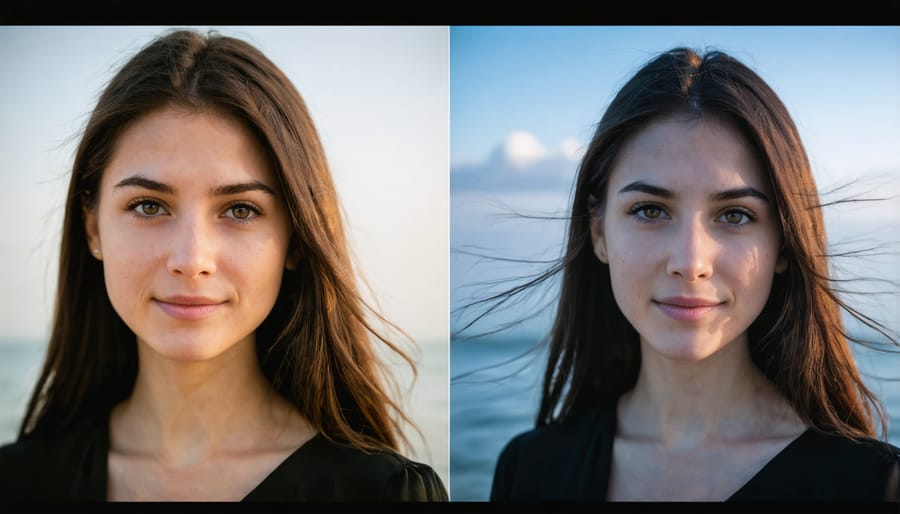
Real-World Applications
Street and Travel Photography
When it comes to street and travel photography, both sensor sizes offer distinct advantages that can influence your shooting experience. The 1-inch sensor cameras typically win in terms of ultimate portability, often fitting comfortably in a jacket pocket or small bag. This makes them ideal for photographers who prioritize traveling light or want to remain inconspicuous while capturing candid street scenes.
Four Thirds sensors, while requiring slightly larger bodies, still maintain excellent portability compared to larger formats like APS-C or full-frame. The extra sensor real estate provides better low-light performance and depth-of-field control, which can be crucial when shooting in dimly lit street scenes or capturing environmental portraits during your travels.
What’s particularly interesting is how these formats handle dynamic range in challenging lighting conditions. Four Thirds sensors generally offer more flexibility when dealing with high-contrast scenes, such as sunny street markets or backlit architecture. However, modern 1-inch sensors have made impressive strides in this area, and many photographers find their performance more than adequate for most travel scenarios.
The choice often comes down to your shooting style. If you’re the type who wants a camera always at the ready, a 1-inch sensor camera might be your best companion. But if you’re willing to carry a slightly larger kit for better image quality and more creative control, the Four Thirds system could be the sweet spot between portability and performance.
Portrait and Studio Work
When it comes to portrait and studio photography, the Four Thirds sensor shows its strengths through excellent depth-of-field control and superior detail rendering. The larger sensor size compared to 1-inch delivers noticeably better subject separation, creating that coveted professional look with creamy backgrounds that portrait photographers love.
In controlled studio environments, Four Thirds sensors typically deliver better dynamic range and color depth, allowing for more flexibility in post-processing, especially when working with studio lighting setups. The increased sensor real estate means better noise handling at higher ISOs, which can be particularly valuable when working with strobes or in dimmer studio conditions.
However, 1-inch sensors shouldn’t be dismissed entirely for portrait work. Their smaller size can actually be advantageous when you need greater depth of field while maintaining reasonable aperture settings. This can be particularly useful for environmental portraits or when photographing small groups where you want more elements in focus.
Both sensor formats support professional-grade lenses with portrait-friendly focal lengths, though Four Thirds systems generally offer a wider selection of premium portrait-specific optics. The size advantage of 1-inch sensor cameras makes them more portable for location shoots, but the image quality benefits of Four Thirds sensors often outweigh the slight size penalty for serious portrait work.
For studio professionals who prioritize image quality and creative control over absolute portability, Four Thirds remains the more compelling choice.
Price-Performance Consideration
When considering the price-performance ratio of 4/3 and 1-inch sensors, it’s essential to understand that you’re not just paying for the sensor alone but for the entire ecosystem of equipment. While 4/3 sensors generally command higher prices, they often deliver superior image quality and better low-light performance that many photographers find worth the investment.
1-inch sensor cameras typically offer a more budget-friendly entry point into advanced photography. You can find quality cameras with 1-inch sensors starting around $600-800, making them attractive for enthusiasts looking to upgrade from smartphone photography. These cameras often deliver excellent results in good lighting conditions and maintain a favorable balance between image quality and portability.
On the other hand, 4/3 sensor cameras usually start at around $1,000 and can go significantly higher. However, this premium often includes features like better weather sealing, more robust build quality, and enhanced lens and sensor performance. The larger sensor size also provides more flexibility in post-processing, particularly when recovering highlights and shadows.
Consider your long-term investment plans as well. While 1-inch sensor cameras might save you money initially, you may find yourself wanting to upgrade sooner as your skills advance. The 4/3 system, though pricier upfront, often provides more room for growth and can serve your needs longer.
Factor in lens costs too. While both systems have various lens options, 4/3 lenses tend to be more expensive but often offer superior optical quality. 1-inch sensor cameras, especially fixed-lens models, can provide excellent value if you’re comfortable with their limitations.
The sweet spot really depends on your priorities. If budget is a primary concern and you need a capable camera for casual use, a 1-inch sensor system might be ideal. However, if you’re serious about photography and can afford the investment, a 4/3 system could offer better value over time through superior image quality and greater creative possibilities.
When choosing between 4/3 and 1-inch sensors, your decision should ultimately depend on your specific photography needs and priorities. The larger 4/3 sensor generally offers superior image quality, better low-light performance, and more pleasing background blur – making it an excellent choice for professional work, portrait photography, and situations where image quality is paramount.
However, 1-inch sensors have their own compelling advantages. Their smaller size enables more compact and lightweight camera systems, making them ideal for travel photography, street shooting, or when portability is essential. They also typically offer better value for money, making them an attractive option for enthusiasts working within a budget.
Consider your shooting style and requirements carefully. If you frequently shoot in challenging lighting conditions, need shallow depth of field, or require the highest possible image quality, a 4/3 sensor might be worth the investment. On the other hand, if you value portability, want a more affordable system, or need a versatile everyday camera, a 1-inch sensor could be the perfect fit.
Remember that both sensor sizes are capable of producing excellent images in the right hands. The key is matching the tool to your specific needs, shooting style, and budget rather than focusing solely on specifications.


